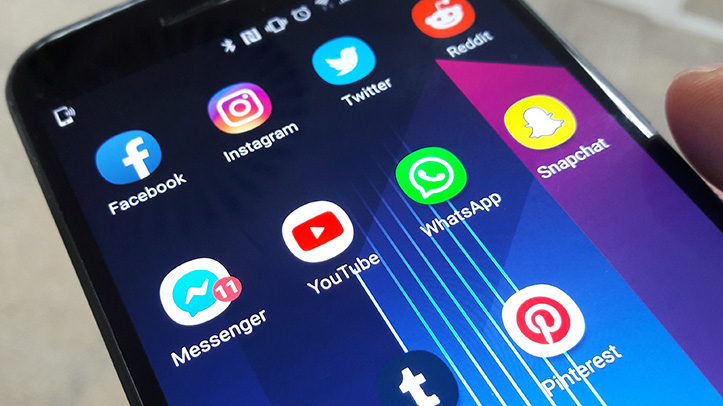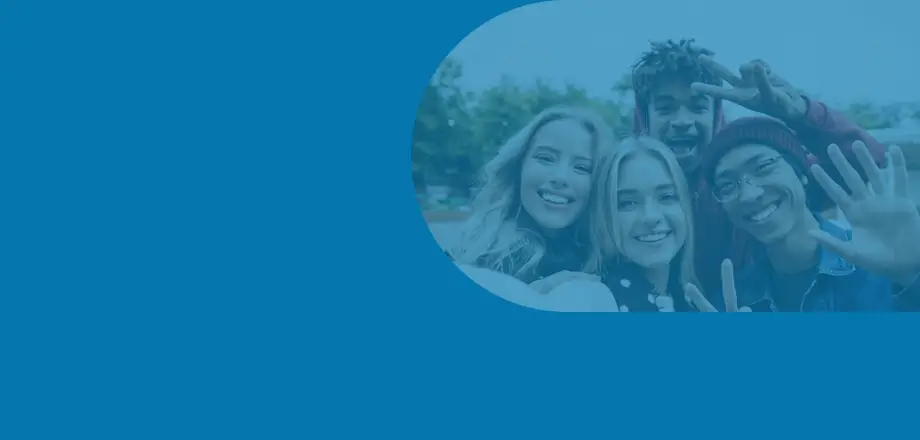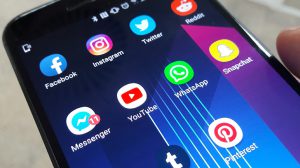
Between 9 – 10 May, the Children’s Commissioner for England, Anne Longfield, hosted a conference on children’s digital rights at BBC Salford for ENOC – the network of Children’s Commissioners and Ombudsmen from all over Europe. Pupils from two local schools, Chorlton High School and Manchester Communication Academy, joined the conference for a session in which they put their questions to representatives of some of the biggest social media companies.
Chorlton High School kicked off the session by setting out what the digital world would look like if it was built for young people like them. Here is what they said:
On behalf of the children in the UK, we thank you for inviting us here today and allowing our voices to be heard.
In the early 1980s, when Microsoft was first starting out, Bill Gates was quoted as saying that his vision for the future was to have a computer in every home in America. At the time all the experts said that this was not only a ridiculous idea, but that nobody would need a computer in their home, businesses are the only use for computers. Nearly 40 years on and this ‘ridiculous’ vision was not only realised, but was wildly naive. Now every person, young and old, rich and poor has a computer in their pocket. In just 40 years’ this technology has gone from science-fiction to the very fabric of modern society, normal for every user. But we ask, how much do we know about the impacts of this technology. Like Bill Gates in the 1980s, we can have a vision or an idea of how important or dangerous this technology is, but like Bill, will our ideas be wildly underestimated and will the impact be too great to comprehend.
As teenagers living in the 21st century we have grown up in a world connected. The internet was invented long before we were born. It made its way into our homes with our parents’ generation. We have never known a world without the internet, without YouTube, Google or Facebook. Our homework is done through trawling Wikipedia pages and not the aisles of our local library. We listen to music through streaming services such as Spotify, and not on our personal Walkman. We watch YouTube videos about literally everything. It is there if we want to understand a complicated science theorem or how to use makeup to contour our face. We use it when communicating with our friends across multiple platforms, SnapChat, Instagram, iMessage and WhatsApp, instead of having to ‘knock on’ or phone their home to see if they were coming out. We can communicate now more freely and more widespread than ever before. We have been born into the widest community of friends you could possibly imagine, THE DIGITAL WORLD.
The internet gives many children the opportunity to experience their rights outlined in the UNCRC: Article 13 – Freedom of expression; Article 15 – Freedom of association; Article 17 – Access to information from the media; Article 31 – leisure, play and culture.
Where one child sees belonging, another feels longing.
Internet apps give many children a sense of belonging as they invite us into a wider community that makes us feel as though we belong, but to be outside of this community makes many children feel alone. Watching YouTube, looking at the latest videos of our favourite YouTubers is a great way to keep in-touch with the current trends or news, but is it enough to be connected to others through a screen? We are sold the idea that the internet is our canvas and with it we can create anything that we want to. But we rarely step back from the screen and think about the impact of this digital age. Where one child sees belonging, another feels longing. Where one child feels accepted, another feels isolated. Where one child who feels adored, there is one who feels abused. And when children withdraw from society and isolate themselves in a digital world, it can be a very dangerous place when that world turns on them.
Some research conducted by the Samaritans states, “We found that at least a quarter of patients who had self-harmed with high suicidal intent had used the internet in connection with their self-harm. Likewise, a national inquiry into suicides by young people found there was suicide-related internet use in nearly half of suicides by young people every year”.
They go on to say “This isn’t surprising though when you think that for many of us, and particularly for young people, the online world is simply a normal part of everyday life. That’s why it’s so important we understand how and when it’s being used.”
Internet use relating to suicide often includes searching for information about suicide, viewing help materials, searching for information about methods or posting messages with suicidal content.
As teenagers we are exposed to many things on the internet that we don’t necessarily want to see.
As teenagers we are exposed to many things on the internet that we don’t necessarily want to see. The problem with the internet now is that it is so tightly linked to our day-to-day lives that we can never be 100% sure that what we do online is entirely safe. A TED Talk by James Bridle called ‘The nightmare videos of childrens’ YouTube’ stated how algorithms can lead children down a very dark path. Algorithms are small programs used to predict users wants and needs, and supply adverts and suggested content for them. He comments how watching a ‘Surprise Egg’ video – a strange young child phenomenon – will select a follow-up video after your chosen video has run. With the algorithm running in the background the videos become increasingly dark, until a ‘Surprise Egg’ video becomes a video showing sexual assault and violence.
Digital companies, politicians and society need to be sure that the internet in 2019 and beyond does not deny us the following Rights: Article 3 – Best interests of the Child; Article 8 – protection and preservation of identify; Article 16 – the right to privacy; Article 19 – protection from violence, abuse and neglect.
Companies like Facebook and YouTube have been challenged around this, suggesting it as their ‘moral responsibility’ to police such things. But we understand that the balance between freedom and censorship is difficult to achieve. One of the best things about the internet is that it ‘is’ free and open, where opinions are voiced and people share ideas, concepts and views efficiently. Therefore, we believe that we all have a responsibility to protect every child’s childhoods.
Only through education on fair and respectful usage, can the internet become safer for all children to use.
Safe settings are now ubiquitous amongst online services, and yet they are mostly futile. Aiming to restrict certain content through passwords and blocking sites, censorship seems a great option. But with every policy, there is an anti-policy and there is now a plethora of ways to by-pass these, from VPN to changing DNS codes. I wish we had an answer for you today on how this could be fixed, on how we could have a free and open internet, but one without fear or danger, but I can’t. And in truth it might be that there is no answer. What we can only suggest is that the real solution lies in promoting responsible usage of the internet and not in restriction or censorship. Only through education on fair and respectful usage, can the internet become safer for all children to use.
Tim Berners-Lee created the World Wide Web or Internet as we know it. And since the mid-1990s, the Internet has had a revolutionary impact on culture, commerce, and technology. What we need to be sure of, is that such a powerful and important tool is not allowed to become a breeding ground for racism, sexism, violence, abuse and bullying in our children.
Our internet needs a change. That’s the mission for today. Dedicating ourselves to a safe, fun and free online world. The future must be a place of connected liberty and we will only get there if we work together.






